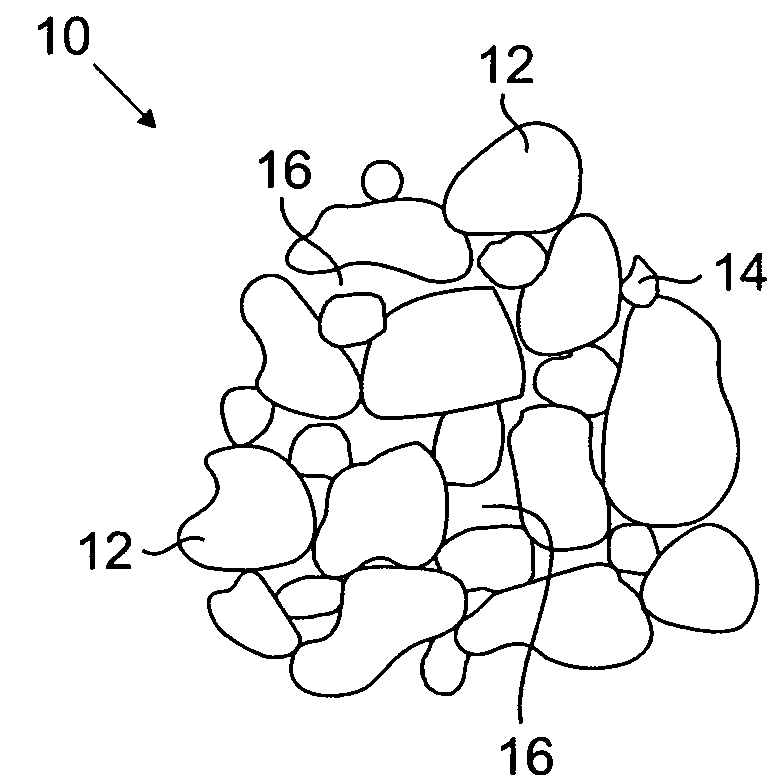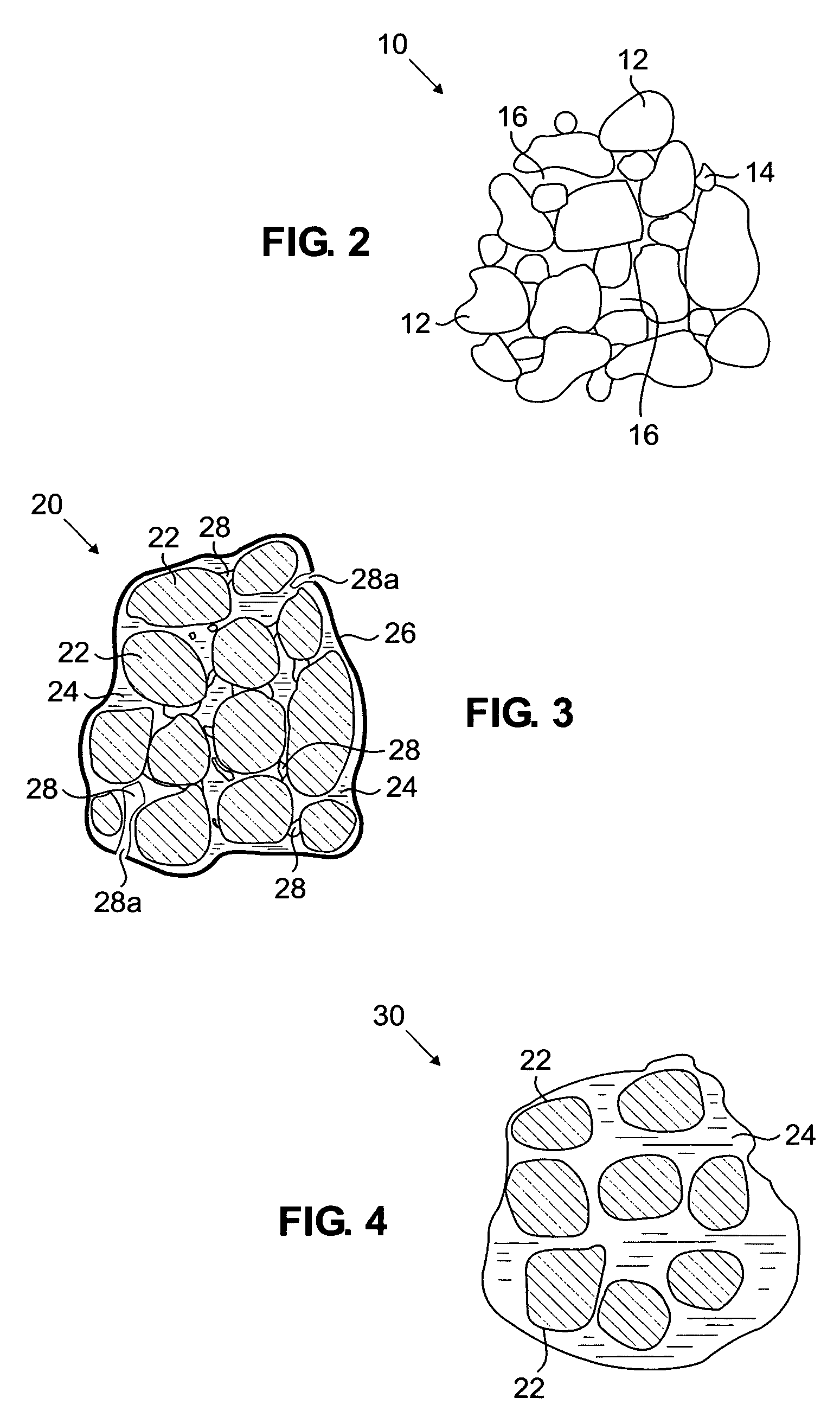Pyroprocessed aggregates comprising IBA and low calcium silicoaluminous materials and methods for producing such aggregates
a technology of iba and low calcium silicoalumina, which is applied in the direction of solid waste management, sustainable waste treatment, pigmentation treatment, etc., can solve the problems of unpredictable pyroprocessing behavior and difficult pyroprocessing of iba into products having desired characteristics, and achieve economic and environmental benefits. substantial and reduce the dependence of iba
- Summary
- Abstract
- Description
- Claims
- Application Information
AI Technical Summary
Benefits of technology
Problems solved by technology
Method used
Image
Examples
example 1
[0074]In this example, pyroprocessed aggregates were made comprising IBA and waste glass (“WG”).
[0075]Prior to receipt for processing into aggregates, the IBA is typically screened to separate large objects or strand-like materials. Ferrous metals are removed by electromagnets and non-ferrous metals are removed by eddy current separators, for example. The remaining materials are fractionated by size, which may be used for different purposes. The fraction less than about 8 mm was used in these Examples. A larger fraction could also be used, after crushing.
[0076]The average chemical analyses (major oxides) of the IBA and WG used in these experiments are shown in Table A, below. The WG in this study is made from soda-lime glass, which accounts for approximately 90 percent of the glass produced in the United States. It consists mainly of silicon, sodium, and calcium oxides with other minor components, such as aluminum and magnesium oxides. The composition of the glass causes the materia...
example 2
[0105]In this example, pyroprocessed aggregates were made comprising IBA and granite sawing residues (“GSR”). The average chemical analyses (major oxides) of the IBA and the GSR used in these experiments are shown in Table G, below. The composition of the IBA used in Example 2 is the same as that used in Example 1. The same equipment used in Example 1 is used here. The IBA was processed prior to receipt, as discussed above.
[0106]
TABLE GCHEMICAL ANALYSIS OF IBA & GSRWeight (%)ConstituentIBAGraniteSiO241.9165.17Al2O311.0914.75Fe2O35.836.28CaO19.992.61MgO1.570.32Na2O1.802.02K2O1.114.22TiO21.310.15
[0107]IBA and GSR were subjected to processing described above and shown in FIG. 7. GSR was sieved through a 150 micron sieve and the resulting fraction was used. GSR was added to the IBA so that both materials were subjected to wet milling together.
[0108]Samples of 1 kg of IBA and GSR in selected proportions of 100% / 0%, 80% / 20%, 60%140% and 40% / 60 were wet milled as described in detail in Exa...
example 3
[0121]In this example, pyroprocessed aggregates were made comprising IBA and clays.
[0122]The average chemical analyses of bentonite and kaolin, shale, and slate used in these experiments are shown in Table J, below. The composition of the IBA used in Example 3 is the same as that used in Examples 1 and 2. The same equipment used in Example 1 is used here.
[0123]
TABLE JCHEMICAL ANALYSIS OF CLAYS, SHALE, AND SLATEWeight (%)ConstituentbentonitekaolinshaleslateSiO251.9948.3254.2358.32Al2O318.4229.4424.8528.54Fe2O31.652.745.127.23CaO1.042.820.761.82MgO4.022.990.883.67Na2O0.440.881.111.45K2O0.620.292.160.88TiO20.500.420.020.02
[0124]The bentonite, kaolin, shale, and slate were subjected to processing as described in FIGS. 1, and 10-12, respectively, and in more detail in Example 1.
[0125]Samples of 1 kg of IBA were wet milled at water-to-solids ratios of 2 for 8 hours, the milled slurries were sieved and the fraction less than 355 microns was filtered to remove free water. The solid moist ca...
PUM
| Property | Measurement | Unit |
|---|---|---|
| relative density | aaaaa | aaaaa |
| temperature | aaaaa | aaaaa |
| temperature | aaaaa | aaaaa |
Abstract
Description
Claims
Application Information
 Login to View More
Login to View More - R&D
- Intellectual Property
- Life Sciences
- Materials
- Tech Scout
- Unparalleled Data Quality
- Higher Quality Content
- 60% Fewer Hallucinations
Browse by: Latest US Patents, China's latest patents, Technical Efficacy Thesaurus, Application Domain, Technology Topic, Popular Technical Reports.
© 2025 PatSnap. All rights reserved.Legal|Privacy policy|Modern Slavery Act Transparency Statement|Sitemap|About US| Contact US: help@patsnap.com



